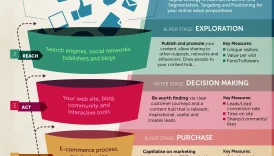SEO Basics: Essential Guide to Improve Your Website Ranking

- SEO Basics: Essential Guide to Improve Your Website Ranking
- SEO Basics: Core Principles for Sustainable Rankings
- Performing Keyword Research: Find High-Value Search Terms
- On-Page SEO Essentials: Optimizing Content for Search Engines
- Meta Description Optimization: Crafting Descriptions that Drive Clicks
- Title Tags and Headings: Structuring for Clarity and SEO
- Internal Linking Strategy for SEO Growth
- Latent Semantic Indexing (LSI) Signals in Content Strategy
- Local SEO Tactics for Nearby Audiences
- SEO Checklist for a Successful Website Launch
- Measuring SEO Performance: Key Metrics and Tools
- Frequently Asked Questions
- What are SEO basics and why are they important?
- How does keyword research fit into SEO tips and on-page SEO?
- What is on-page SEO and what elements matter most for ranking?
- Why is meta description optimization important for click-through rates?
- What is an SEO checklist and how should I use it day-to-day?
- How often should I perform keyword research and update content?
- What are common SEO mistakes beginners make and how can I avoid them using SEO tips?
- How can I measure the impact of my SEO basics efforts using an SEO checklist?
- Summary
SEO basics form the foundational framework you need to understand how search engines interpret your pages, how they decide which results to show for a given query, and why a thoughtful balance of technical structure, user experience, and relevant content matters to both audience and algorithm; this framing also guides how teams structure content workflows, measure performance, and communicate strategy across disciplines. Smart SEO tips emphasize a disciplined on-page SEO approach, where clear keyword focus, accessible metadata, and clean HTML semantics help search engines read your content without guessing, while a user-centric layout—fast loading times, readable typography, and intuitive navigation—keeps visitors engaged long enough to signal value, and this combination addresses both ranking signals and user satisfaction, laying a strong groundwork for content that earns trustworthy visibility. Keyword research reveals the phrases your audience uses, guides topic selection, and informs how you organize headings, bullets, and media to align with user intent and topical relevance, while helping you forecast content performance across devices. Meta description optimization is not only about crafting a persuasive snippet; it reinforces relevance, improves click-through rates, and sets expectations so visitors arrive with the intent your page promises, pairing this with structured data and concise previews to help search engines present richer results. Finally, maintain an SEO checklist that covers technical health, content freshness, internal linking, and performance tracking, so you can iterate quickly and keep pace with changing ranking factors, while ensuring the checklist remains living and adaptable by integrating new insights from analytics dashboards and user feedback to guide ongoing improvements.
Beyond the basics, you can frame the topic in terms of organic search optimization, focusing on how search engines interpret signals, assess relevance, and deliver results tailored to user intent. Think in terms of ranking factors, semantic relationships, and content quality that help pages earn visibility across devices and contexts. Effective site architecture, clear navigation, fast performance, and semantic markup all contribute to better crawlability and user satisfaction. In practice, combine thorough topic research, authoritative linking, and helpful, well-structured content to create a trustworthy information ecosystem. Monitor performance with analytics and iterate frequently, aligning content strategy with evolving search patterns and consumer needs.
SEO Basics: Core Principles for Sustainable Rankings
SEO basics form the foundation of any successful search strategy. To start, embrace practical SEO tips that cover technical health, content relevance, and user satisfaction. Understanding on-page SEO signals and how keyword research informs content decisions helps align your site with what search engines value most.
As you build your approach, focus on long-term value over quick wins. Prioritize website accessibility, high-quality content, and clear user intent signals. A solid SEO checklist keeps you organized and ensures you consistently apply best practices across pages, improving crawlability and overall visibility.
Performing Keyword Research: Find High-Value Search Terms
Keyword research is the compass for content strategy. Start with seed terms and expand using keyword research tools to uncover search volume, competition, and intent. Look for opportunities where queries align with your topics and where related terms can broaden coverage without keyword stuffing.
Map each target keyword to user intent—informational, navigational, or transactional—and plan content that satisfies that intent. Incorporate related terms and synonyms to leverage LSI concepts, which helps your content rank for a broader set of search queries while remaining natural and helpful.
On-Page SEO Essentials: Optimizing Content for Search Engines
On-page SEO focuses on the elements you control within each page: title, headings, body content, images, and internal links. Place your primary keyword strategically in the title and first 100 words, then reinforce it with subheadings and meaningful alt text for images. Well-structured content improves readability and signals relevance to search engines.
Beyond keywords, optimize for user experience with concise paragraphs, clear calls to action, and accessible design. Use related terms and semi-structured data to support the topic, and ensure internal links connect related articles. This approach aligns with modern on-page SEO practices and enhances overall content quality.
Meta Description Optimization: Crafting Descriptions that Drive Clicks
Meta descriptions are your chance to entice clicks in search results. Write concise, benefit-focused descriptions that summarize the page and include a relevant keyword when natural. A well-crafted meta description sets expectations and can improve click-through rates when paired with strong page titles.
Experiment with tone, value propositions, and calls to action within meta descriptions. While meta descriptions don’t directly determine rankings, they influence user behavior and signal relevance to the searcher. Regularly review performance data to refine your approach and maximize engagement.
Title Tags and Headings: Structuring for Clarity and SEO
Title tags are prime real estate for ranking and click appeal. Craft titles that clearly convey the page’s topic, include the primary keyword, and maintain an appropriate length. A strong title supports both SEO and user comprehension, guiding readers to the right content.
Inside the page, use a logical heading structure (H1, H2, H3) to organize information. Clear headings help search engines understand content hierarchy and improve accessibility. Pair headings with optimized snippets of content and related terms to reinforce relevance.
Internal Linking Strategy for SEO Growth
Internal linking distributes authority, guides crawlers, and helps users discover related content. Create a thoughtful linking strategy that connects thematically related articles and distributes link equity to priority pages. Use descriptive anchor text that reflects the linked page’s topic rather than generic terms.
Develop topic clusters where pillar content is supported by related articles. Regularly audit internal links to fix broken paths and ensure important pages remain accessible. A strong internal linking plan is a core component of an effective SEO strategy.
Latent Semantic Indexing (LSI) Signals in Content Strategy
Latent Semantic Indexing (LSI) signals help search engines understand the broader context of a topic. Incorporate related terms, synonyms, and semantically connected phrases to boost content relevance beyond exact keyword matches. This approach supports richer, more authoritative content.
Use keyword research to identify related terms and integrate them naturally throughout your content. LSI-inspired writing avoids repetition and improves topic coverage, which can enhance rankings and user satisfaction. Focus on the intent behind queries and provide comprehensive answers that address related questions.
Local SEO Tactics for Nearby Audiences
Local SEO concentrates on visibility for location-based searches. Ensure your Google Business Profile is complete, accurate, and up-to-date, with consistent NAP (name, address, phone) across listings. Positive reviews and timely responses can boost local trust and rankings.
Create location-specific content that addresses nearby customers’ needs and utilizes local keywords. Implement schema markup for local business data and encourage customers to leave reviews. A strong local presence supports higher visibility in maps and local search results.
SEO Checklist for a Successful Website Launch
A structured SEO checklist helps ensure a smooth launch. Begin with crawlable site architecture, a clear sitemap, and proper robots.txt configuration to guide search engines. Check canonicalization, duplicate content, and URL structure to prevent early indexing issues.
After launch, monitor performance, fix technical issues, and optimize on-page elements. Review title tags, meta descriptions, and alt text for all pages, and confirm internal links point to the right destinations. Regular audits keep momentum and support ongoing improvements.
Measuring SEO Performance: Key Metrics and Tools
Measuring SEO performance requires selecting meaningful metrics. Track organic traffic, keyword rankings, click-through rate, and conversion pathways to gauge effectiveness. Use tools like Google Analytics and Google Search Console to collect data and spot trends.
Create dashboards that reflect goals and enable comparisons over time. Run experiments, such as A/B testing meta descriptions or page titles, to refine elements that influence rankings and user engagement. Regular reporting helps you adjust strategies based on real-world results.
Frequently Asked Questions
What are SEO basics and why are they important?
SEO basics include planning, keyword research, on-page SEO, meta description optimization, and technical health. Understanding these elements helps you optimize content for both users and search engines.
How does keyword research fit into SEO tips and on-page SEO?
Keyword research informs SEO tips and on-page SEO by identifying terms your audience searches for. Use these terms in titles, headings, content, and image alt text to improve relevance without stuffing.
What is on-page SEO and what elements matter most for ranking?
On-page SEO optimizes the page itself: title tags, meta descriptions, heading structure, content quality, internal links, and image optimization. A strong on-page approach helps search engines understand your topic and rank your pages.
Why is meta description optimization important for click-through rates?
Meta description optimization affects click-through rate by presenting a clear, compelling summary that includes the target keyword. While it may not directly boost rankings, a well-crafted description encourages clicks.
What is an SEO checklist and how should I use it day-to-day?
An SEO checklist is a practical, repeatable set of tasks for content creation and updates. Use it to ensure keyword research, on-page SEO, meta descriptions, internal linking, and technical checks are completed consistently.
How often should I perform keyword research and update content?
Perform keyword research when planning new content and review rankings regularly (e.g., quarterly). Update content as keywords shift and competitors change to maintain relevance.
What are common SEO mistakes beginners make and how can I avoid them using SEO tips?
Common SEO mistakes include keyword stuffing, thin content, ignoring mobile optimization, neglecting internal links, and skipping analytics. Counter them by following SEO tips and regularly auditing your site.
How can I measure the impact of my SEO basics efforts using an SEO checklist?
Measure impact by tracking organic traffic, keyword rankings, click-through rate, and conversions. Use an SEO checklist to align metrics with goals and adjust strategy based on data.
| Key Point | Description | Example | Impact |
|---|---|---|---|
| Point 1 | Describe the first key point from the base content here. | Provide an example or reference from the base content. | Explain its impact or relevance. |
| Point 2 | Describe the second key point from the base content here. | Example or reference. | Impact or relevance. |
| Point 3 | Describe the third key point from the base content here. | Example or reference. | Impact or relevance. |
| Point 4 | Describe the fourth key point from the base content here. | Example or reference. | Impact or relevance. |
Summary
I’m missing the Base Content after ‘Base Content:’. Please paste the content you want summarized so I can generate the final HTML table and tailored SEO-friendly conclusion. As soon as you provide the text, I will replace placeholders with accurate points and craft a conclusion in English starting with a sentence that includes ‘SEO basics’.
Autowp is an AI content generator and AI content creator plugin for WordPress that accelerates your publishing workflow with high-quality, SEO-friendly content, smart topic ideas, and in-editor editing that respects your voice and SEO goals. With seamless WordPress integration, it turns notes into publish-ready posts, saves time, and scales your content strategy across sites — discover more at Autowp. To remove this promotional paragraph, upgrade to Autowp Premium membership.





